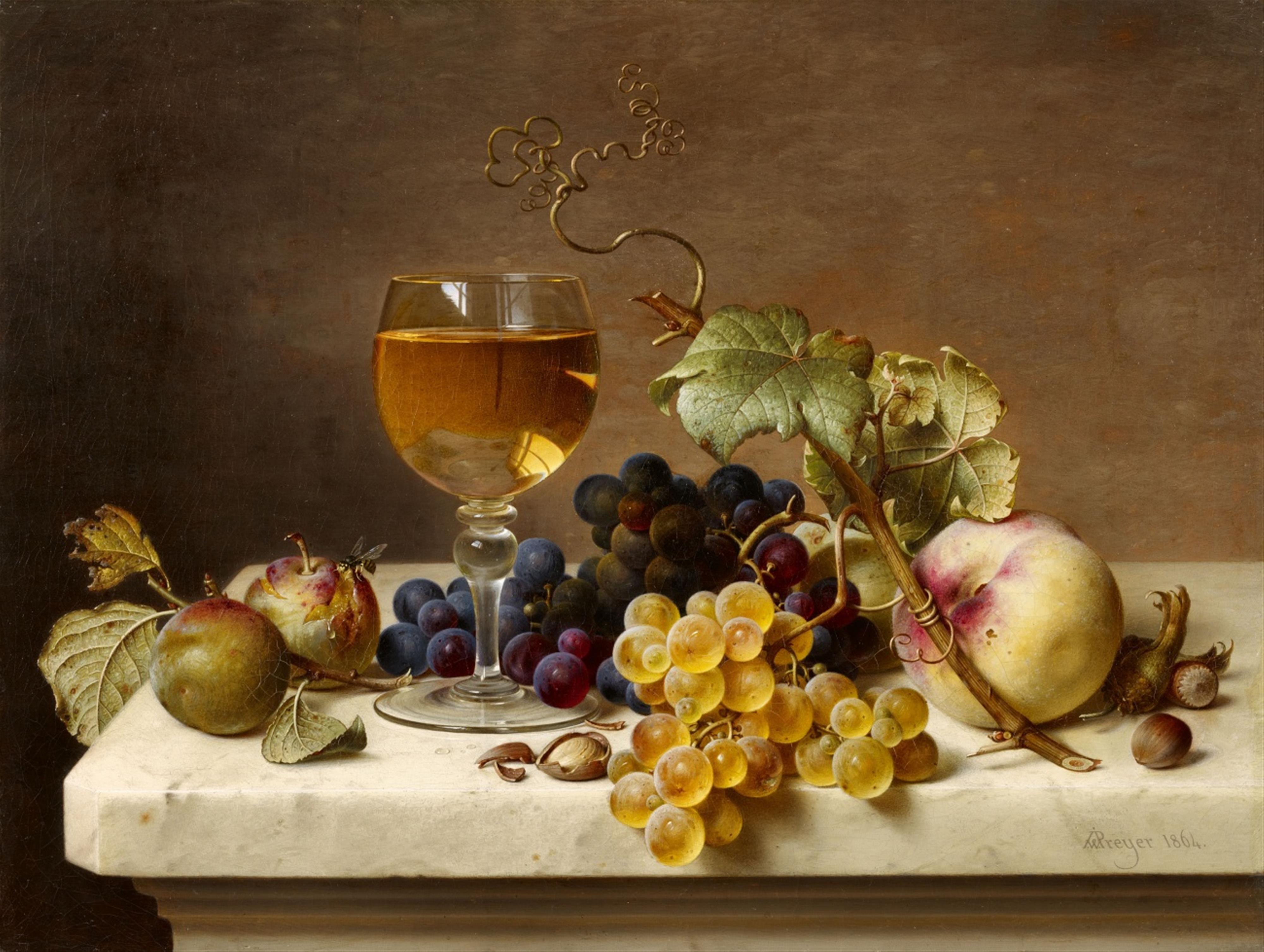Johann Wilhelm Preyer
Fruit Still Life with Greengages, a Glass of Wine, Grapes, Peaches, and Hazelnuts on a Marble Slab
Oil on canvas. 31 x 41 cm.
Signed and dated lower right: JWPreyer 1864. (JWP joined).
What is fascinating about Johann Wilhelm Preyer's still lifes is his remarkably meticulous style. Every object the artist presents to us seems close enough to touch: From the cold marble slab, the fragile diaphonous wine glass reflecting the window panes of the artist's studio, the velvety skin of the peach, or the fresh and wilted leaves of the vines and plums. In the still life painting of the Baroque era, such allusions to decay would have been charged with the morals of vanitas, but the 19th century dispensed with these concealed allegories, choosing instead to simply celebrate the stupendous virtuosity of the painter - as “l'art pour l'art” in its finest form.
Preyer's works were highly sought after throughout his lifetime. His collectors included prominent figures such as King Ludwig I of Bavaria and Consul Joachim Heinrich Wilhelm Wagener, whose collection laid the foundations for that of the Alte Nationalgalerie in Berlin. He also boasted numerous patrons in the United States, and many of his works are still housed in collections there. Friedrich von Boetticher perfectly summarised the reason for Preyer's success in his standard volume “Malerwerke des Neunzehnten Jahrhunderts” in the simple statement: “His works are unsurpassed”.
Due to the artist's highly detailed style and the careful and lengthy planning he expended on his works in the form of sketches and drawings, Preyer's œuvre remained comparatively modest, and his pieces rarely appear on the market. An ink and pencil study for the present work is kept in the Städtisches Museum Schloss Rheydt (inv. no. Gr. 1435).

